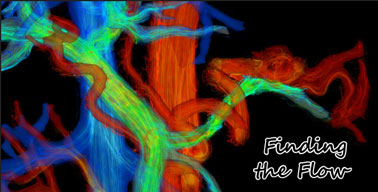
Scott B. Reeder, M.D., Ph.D., chief of the Cardiovascular Imaging Section, and Oliver Wieben, Ph.D., of the Cardiovascular and Imaging Sciences Sections, are named co-principal investigators on a $985,000 grant from the National Institutes of Health to study blood flow to the liver in patients with portal hypertension (high blood pressure in the vessel conducing blood from the intestinal tract, liver, and spleen). Portal hypertension is the most common and most lethal complication of chronic liver disease, and it is often responsible for preventing blood flow to the liver.
Currently, there are no adequate methods to measure blood flow to the liver due to a number of technical complications. Most existing therapies reduce portal pressure through reductions in the blood flow to the liver or shunting flow from the portal circulation. There is need to find accurate biomarkers of blood flow to the liver that would complement and augment heptic venous pressure gradient (HVPG) measurements. HVPG is an invasive catheter-based method used to measure hypertension in the portal vein, and is currently the best biomarker available for portal hypertension. However, this method only provides a global measure of the disease.
This study seeks to rectify the lack of imaging techniques by developing a velocity-sensitive 4D flow MRI method that will, simultaneously, image vascular anatomy, and quantify blood flow within the vascular areas of the liver. If this technique is successful, it would provide a more accurate tool for predicting further complications from portal hypertension in chronic liver disease. The technique would also allow physicians to identify biomarkers to evaluate the blood flow to the liver in a non-invasive way.